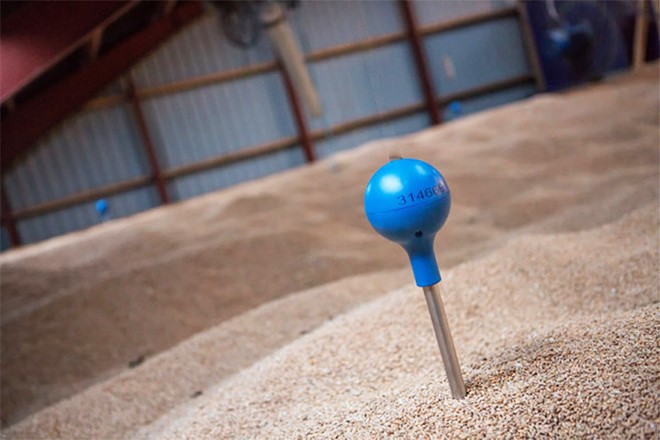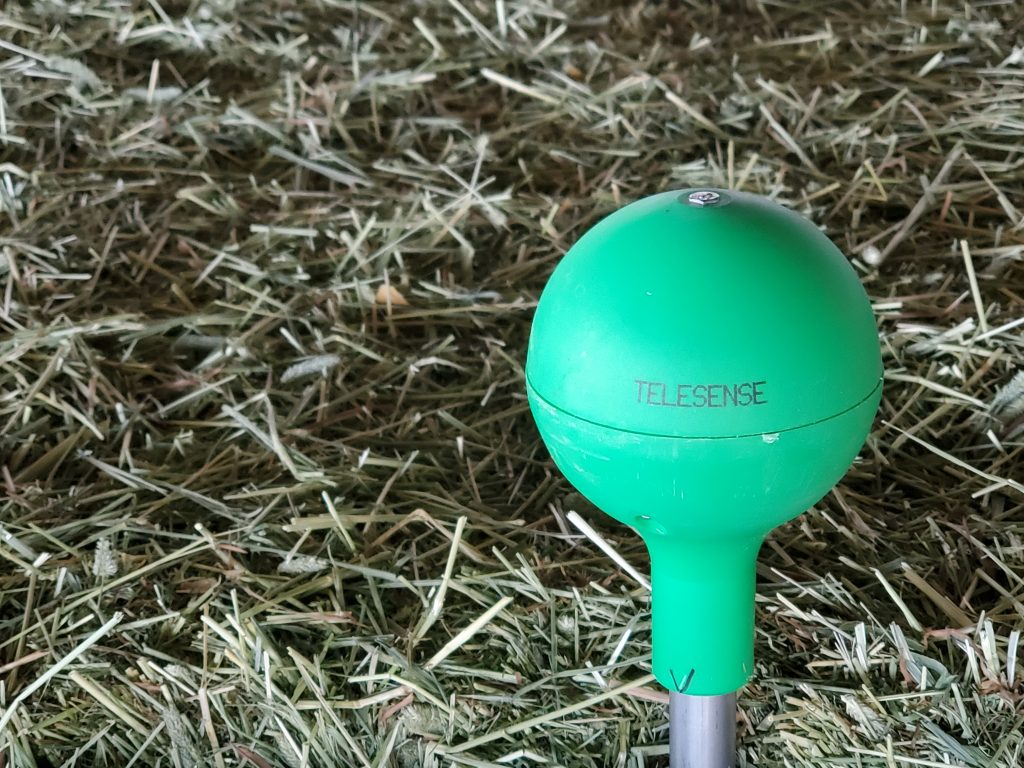TeleSense: IoT for a smarter food supply
Protecting grain supplies with monitoring systems and predictive algorithms
Smarter storage for crucial crops
Can remote monitoring systems help to protect our food supply? It’s estimated that between 30% and 50% of all crops grown worldwide go to waste. Between growing, picking, transit, storage, wholesale distribution, retail sale, and our home and restaurant refrigerators, there’s simply a lot that can go wrong for perishable goods like fruits, vegetables, and grains.
TeleSense, based in Sunnyvale, CA, just a few miles from California’s produce-heavy Central Valley, applies cutting-edge data collection and analysis to the challenge of storing grain for longer periods of time.

TeleSense’s post-harvest monitoring systems let the handlers, co-ops, merchandisers and transporters who work with large quantities of grain continuously monitor and evaluate storage conditions and make data-driven decisions to prevent spoilage and minimize waste.
CHALLENGE
Bringing vital information to light
In the US, the Department of Agriculture estimates that about a third of all farmed produce goes uneaten… at a cost of $161 billion in lost value. Across the developed world, stored grain alone accounts for $12 billion in losses due to spoilage and infestation.
Unlike most crops, grain can be stored for extensive periods of time after harvest. This is an extremely valuable quality, but also means that over time the stored grain may be subject to varying degrees of natural biological decay.
However, reading conditions deep within a mass of stored grain, remains a stubborn challenge. If grain is not kept cool and dry throughout, rot or infestation can set in without any visible outward signs. Traditional methods of monitoring stored commodities remain extremely labor-intensive and offer only intermittent data points. Typically, an employee must physically visit a storage site and take temperature and moisture measurements by hand, on a recurring basis.
So while the value of monitoring is high, the cost has historically been high as well.
SOLUTION
Pulling data out of silos
TeleSense has developed a purpose-built suite of hardware and software solutions that allows users to monitor stored commodities in real time, without fixed connections.
Telesense’s unique physical sensors are designed specifically to collect temperature and moisture data from within large masses of grain. This data is delivered wirelessly to the cloud, typically using a cellular connection, where TeleSense AI and machine learning algorithms sift the incoming data to identify meaningful trends.
This information is reported through the TeleSense App, which contextualizes and clearly displays both data and key analytics. These insights allow users to make better grain quality management decisions, reducing the likelihood of spoilage and allowing cost reduction through more precise energy usage. They also offer decision support related to inventory management, such as which grain to sell first, based on when the grain will likely spoil.
This lets end users monitor conditions at all times and receive alerts to take corrective action if TeleSense identifies a problem with their stored commodity. It also gives them insight into long-term trends so that they can optimize operations and maximize the value they can extract from every bushel of grain.
WHY SORACOM
Affordability, scalability, and control
Soracom’s multicarrier cellular coverage provides reliable connectivity in the rural areas where grain is often stored, and in the remote areas that crops may pass through during transportation.
More importantly, Soracom’s pay-as-you go pricing helps TeleSense scale efficiently, since no cost is incurred until sensors are active in the field.
In addition, the Soracom management console gives the Telesense team a real-time view into device activity, and offers real-time alerts if data usage increases beyond expected levels.
Services in use
• SORACOM Air: smart connectivity for IoT
FUTURE PLANS
Increased automation and enhanced analytics
With finite arable acreage and a global population rapidly approaching 8 billion, ensuring effective storage for crucial staples like corn, wheat, and rice isn’t just a matter of economic value. Given the millions of bushels of grain in storage today, improving visibility and extending storage duration is an important step toward minimizing financial losses… and keeping the planet fed.
As TeleSense expands operations, the team is working actively to release additional automation features and enhanced data analytic

